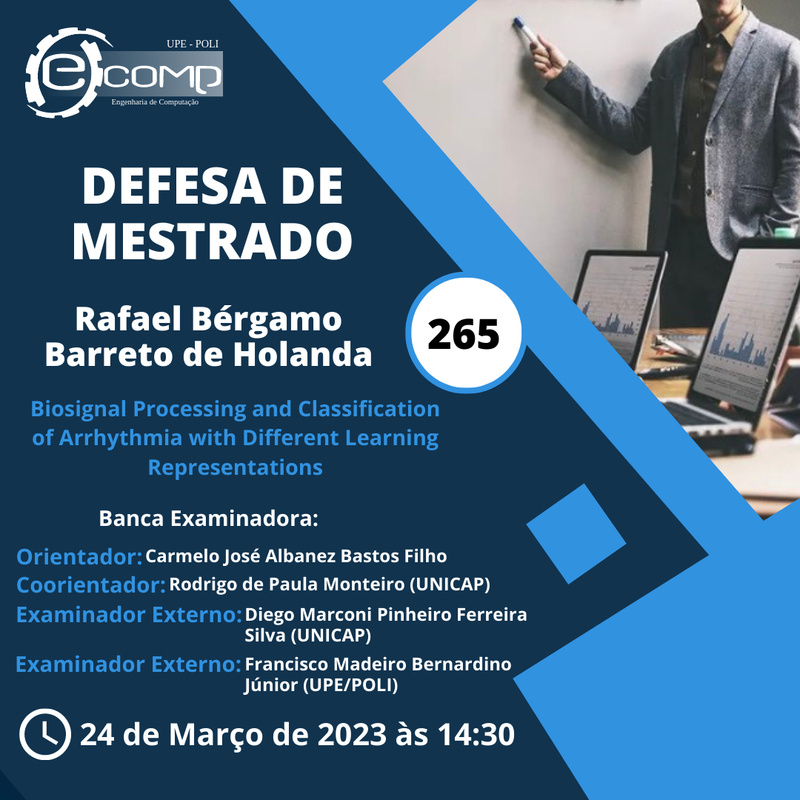Divulgação - Defesa Nº 265
Aluno: Rafael Bérgamo Barreto de Holanda
Título: “Biosignal Processing and Classification of Arrhythmia with Different Learning Representations”
Orientador: Carmelo José Albanez Bastos Filho - (PPGEC)
Coorientador: Rodrigo de Paula Monteiro - (UNICAP)
Examinador Externo: Diego Marconi Pinheiro Ferreira Silva - (UNICAP)
Examinador Externo: Francisco Madeiro Bernardino Júnior - (UPE/POLI)
Data-hora: 24 de Março de 2023, às 14:30h.
Local: REMOTO (https://meet.google.com/eaj-aigd-kra)
Resumo:
Cardiovascular diseases are the leading cause of death worldwide. Those diseases have many causes and are segmented into many categories, and one of them is Arrhythmia. Arrhythmia classification has been a frequently investigated topic in the literature, be it in Signal Processing or Computer Science literature. Some of the proposed solutions for their classification include mathematical models in the field of Artificial Intelligence, Machine Learning, and Deep Learning. Although their classification has reached high metrics in the literature, there are many methods for such performance that are not discussed in depth, especially when it comes to the learning representations used as input to the mathematical models that will eventually output their classification metrics. Also, in the example of Deep Learning models that are employed in the classification, researchers tend to use very large models with high complexity for obtaining such classification metrics. However, adequate learning representations resulting from preprocessing techniques may avoid the need for larger models and maintain or even improve the Arrhythmia classification metrics, and these smaller models may then be embedded in devices that require a low footprint. The contributions described in this dissertation demonstrate that it is possible to use smaller models, including Machine Learning models, to acquire high classification metrics on the most common types of Arrhythmia by choosing the appropriate learning representations resulting from Electrocardiogram filtering and spectral transforms. Our work sets a detailed and reproducible experimental methodology using the traditional learning representation of Time and comparing it to the Frequency learning representation as well as Time-Frequency learning representations. We prove with statistical significance the most appropriate form of classifying an Arrhythmia using the AAMI standard considering low-complexity Machine Learning and Deep Learning models, having found that: the Scalogram generated by the Mexican Hat Wavelet with 64 scales and a low-frequency noise filter is the most suited representation in a balanced dataset; and the Time representation, also with a low-frequency filter, the most suited for an imbalanced dataset.



